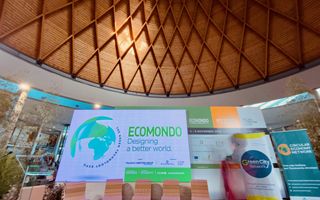(Finance) – With a turnover of over 102 billion euros in 2023, approximately 60 thousand companies, 600 thousand employees and an incidence of 4% of the national GDP, of which 90% is generated by exports, the fashion industry represents the third manufacturing sector in Italy. However, the textile sector is also one of those with the greatest ecological impact: globally it is the second most polluting industry after the oil industry, consuming 93 billion cubic meters of water every year, and is responsible for 20% of the pollution of the Earth’s drinking water and 10% of CO2 emissions. On the occasion of the round table on fashion, called for Tuesday 6 August by the Minister of Enterprise and Made in Italy, Adolfo Urso, to discuss the crisis in the textile sector and possible solutions, Ecomondo – the leading event in the Mediterranean basin for the green and circular economy sector, which will be held at the Rimini fair from 5 to 8 November, organised by Italian Exhibition Group (IEG) – offers itself as a hub for discussion to address issues related to the environmental challenges that the textile supply chain faces.
One of the major critical issues in the sector it is, in fact, the End-of-life management of non-reusable clothing and textile fibres. Globally, less than 1% of textile waste is recycled. Much of this waste is exported and ends up in large landfills in Asia, Africa and South America. In Italy, according to Ispra data, in 2022 there were 160 thousand tons of textile waste producedwith an average of approximately 2.7 kg per inhabitant of which only 22% is collected for reuse or recycling.
With the introduction by the European Union of the Extended Producer Responsibility (EPR) Schemes for textile products, which will oblige producers to cover the costs of textile waste management, and the obligation of separate collection for textile products from 2025, it would be necessary to combine regulatory, infrastructural and technological solutions for a transition of the sector towards a circular and sustainable production model.
A possible incentive for the circularity of the sector could come from the introduction of minimum recycled fibre requirements present in all new productsfrom a possible derogation from the REACH regulation and the current regulation, to facilitate the end-of-life management of these materials by avoiding waste dispersion.
Challenges and possible solutions in the textile sector will be discussed on the occasion of Ecomondo 2024, dedicated to technologies, services and industrial solutions in the green and circular economy sectors, which thanks to the proposals for innovation and dialogue of the Textile District, a thematic area dedicated to sustainability in the fashion world, will also address the environmental criticalities of the textile sector. Among the initiatives of this edition, in fact, stands out the theme of waste produced by the supply chainwhich will be at the centre of the conference “Urban textile waste: collection, reuse and recycling. Where are we at?”, organized by the Technical Scientific Committee of Ecomondo and UNIRAU, where industry experts will discuss separate collection models, sorting and recycling technologies, ecodesign, blockchain and digital passport in the textile sector. Particular attention will be paid to updating the regulatory framework and the technological criticalities of textile recycling.
